Blues Saxophone Music and Players
Check out some of the most influential and original blues saxophone players that influenced a generation of Blues, R&B, and Rock & Roll
Have you ever heard the expression; “Blues had a baby and they named it Rock and Roll”?
It’s so true but blues had more than one baby!
The blues format is not only older than Rock and Roll, but also older than Jazz, Swing, R&B, Jump Blues, Boogie Woogie and any other style that stems from these.
You can’t go wrong studying the blues no matter what your favourite style of music is. If you learn things like the blues scale, pentatonic scale and dominant 7 scale you’ll discover they can be applied to many other styles of music. They have their roots in the blues but they work over many other styles mentioned because they’re all related to the blues.
Blues Saxophone Players of Fame and Influence
When we talk about blues saxophone players we’re usually referring to the early contributors of rock and roll. Many of these guys were coming up in the 40’s when Jazz, R&B, Swing and Jump Blues were the thing. The thing that was the pre-curser to rock and roll.
In those early days of rock and roll the sax was front and center and so it’s these players that shaped the sound of the blues saxophone which eventually became the rock and roll sound which is still very much alive and well today.
There is a story about Illinois Jacquet doing a gig with the Lionel Hampton’s band in 1942. His solo during Coming Home was recorded one night and quickly became a major influence on a lot of younger players. Some who are listed here below….most notably King Curtis.
So, something to remember is that many blues saxophone players were also known for their jazz, R&B, and rock and roll playing. But that’s easy to understand since the blues was responsible for all those genres anyway!
Check out some players that helped shape the blues saxophone sound and style of blues-based music such as R&B, and Rock & Roll….
Illinios Jacquet
 Illinios Jacket was influenced by the tenor Jazz stats of the day like Coleman Hawkins and Ben Webster. He was already making a name for himself by the early 1940’s as a member of Lionel Hamptons band. He was one of those magical saxophone blues and jazz players who had a major influence on many of his younger peers such as Big Jay McNeely and King Curtis. After his stint with Lionel Hampton’s band he joined up with the very popular Cab Calloway and Count Basie big bands. After having made a name for himself he then went on to tour the country with his own band.
Illinios Jacket was influenced by the tenor Jazz stats of the day like Coleman Hawkins and Ben Webster. He was already making a name for himself by the early 1940’s as a member of Lionel Hamptons band. He was one of those magical saxophone blues and jazz players who had a major influence on many of his younger peers such as Big Jay McNeely and King Curtis. After his stint with Lionel Hampton’s band he joined up with the very popular Cab Calloway and Count Basie big bands. After having made a name for himself he then went on to tour the country with his own band.
Wild Bill Moore
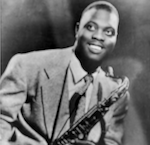 Bill Moore was another one of those young players that was greatly influenced by Illinois Jacket. He started as an alto player but settled on the tenor. He released a song in 1948 called We’re Gonna Rock, We’re Gonna Roll, which has been called the very first rock and roll song in history. It was first time any song had the words rock and roll together in the title. Later in 1949 he updated it on another record label and this time called it Rock and Roll. In 1971 he was still quite active and was part of the Marvin Gaye sessions which produced the songs Mercy Mercy Me and What’s Going On, both featuring Moore on sax.
Bill Moore was another one of those young players that was greatly influenced by Illinois Jacket. He started as an alto player but settled on the tenor. He released a song in 1948 called We’re Gonna Rock, We’re Gonna Roll, which has been called the very first rock and roll song in history. It was first time any song had the words rock and roll together in the title. Later in 1949 he updated it on another record label and this time called it Rock and Roll. In 1971 he was still quite active and was part of the Marvin Gaye sessions which produced the songs Mercy Mercy Me and What’s Going On, both featuring Moore on sax.
King Curtis
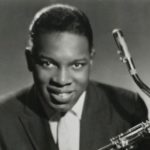 King Curtis’ real name was Curtis Ousley. He was greatly influenced by the first wave of R&B/Blues saxophone players from the 40’s and early 50’s. Some of these were the ones known as “Honkers and Screamers”. Curtis became a busy studio session player and was mostly noted in the 50’s because of his work on The Coaster’s songs. His playing on Yakety Yak (Don’t Talk Back) was the inspiration which led to one of the most famous saxophone instrumentals of all time Yakety Sax which became a big hit for Boots Randolph. You can hear a bit of that tonguing style or technique in a lot of his playing, including this example below. I’ve covered several of his tunes and they’re all available in the Music section on the site here. One of my faves is Soul Twist.
King Curtis’ real name was Curtis Ousley. He was greatly influenced by the first wave of R&B/Blues saxophone players from the 40’s and early 50’s. Some of these were the ones known as “Honkers and Screamers”. Curtis became a busy studio session player and was mostly noted in the 50’s because of his work on The Coaster’s songs. His playing on Yakety Yak (Don’t Talk Back) was the inspiration which led to one of the most famous saxophone instrumentals of all time Yakety Sax which became a big hit for Boots Randolph. You can hear a bit of that tonguing style or technique in a lot of his playing, including this example below. I’ve covered several of his tunes and they’re all available in the Music section on the site here. One of my faves is Soul Twist.
Lee Allen
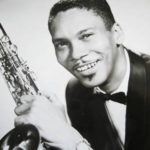 Lee Allen made his name from his studio work on the biggest names of his day. Playing his saxophone on the biggest hits from Little Richard and Fats Domino, two of the biggest names in the 50’s early rock and roll scene. Allen also recorded albums under his own name and was featured regularly for a while on American bandstand with his tune Walking With Mr Lee. You can hear his unique smooth and bluesy style with a definate New Orlean’s influence in his tune Tic Toc below. Available here is the Tic Toc saxophone sheet music with backing track.
Lee Allen made his name from his studio work on the biggest names of his day. Playing his saxophone on the biggest hits from Little Richard and Fats Domino, two of the biggest names in the 50’s early rock and roll scene. Allen also recorded albums under his own name and was featured regularly for a while on American bandstand with his tune Walking With Mr Lee. You can hear his unique smooth and bluesy style with a definate New Orlean’s influence in his tune Tic Toc below. Available here is the Tic Toc saxophone sheet music with backing track.
Big Jay McNeely
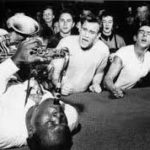 Cecil James McNeely became professionally known as Big Jay McNeely. He was one of the classic and craziest honker and screamer of all time! He had records under his own name along with some hits on the R&B charts. The first and most famous was “The Deacon’s Hop” which there a sample of below. Big Jay loved to hold that one note and milk it for all he could. This gimmick worked well for him because he drove many an audience into hysteria at times laying on the floor and walking through the clubs and even out the door while playing.
Cecil James McNeely became professionally known as Big Jay McNeely. He was one of the classic and craziest honker and screamer of all time! He had records under his own name along with some hits on the R&B charts. The first and most famous was “The Deacon’s Hop” which there a sample of below. Big Jay loved to hold that one note and milk it for all he could. This gimmick worked well for him because he drove many an audience into hysteria at times laying on the floor and walking through the clubs and even out the door while playing.
Sam “the man” Taylor
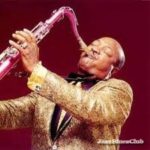 Sam “the man” Taylor was a busy session and touring musician. He worked with the big names of his day; Cab Calloway, Big Joe Turner (Shake, Rattle and Roll), Ray Charles, Louis Jordan. He was also a very respected jazz player as well as a blues and R&B player as you can hear from this sample below.
Sam “the man” Taylor was a busy session and touring musician. He worked with the big names of his day; Cab Calloway, Big Joe Turner (Shake, Rattle and Roll), Ray Charles, Louis Jordan. He was also a very respected jazz player as well as a blues and R&B player as you can hear from this sample below.
Earl Bostic
 Earl Bostic had an amazing sound. He played alto but made it sound more like a tenor with his style, tone, and attitude. He used all the “tricks” and embellishments the tenor players of the day were doing on his alto, and was really the only one who stood out in doing so.
Earl Bostic had an amazing sound. He played alto but made it sound more like a tenor with his style, tone, and attitude. He used all the “tricks” and embellishments the tenor players of the day were doing on his alto, and was really the only one who stood out in doing so.
Red Prysock
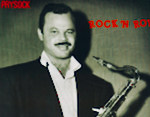 Red Prysock, brother of famous singer Arthur Prysock. Red recorded under his own name as well as playing with other band leadrs. He had an instrumental sax hit in the mid 50’s called Hand Clappin” which really showed off his fast playing skills. He could also get down and soulful too.
Red Prysock, brother of famous singer Arthur Prysock. Red recorded under his own name as well as playing with other band leadrs. He had an instrumental sax hit in the mid 50’s called Hand Clappin” which really showed off his fast playing skills. He could also get down and soulful too.
Willis “Gatortail” Jackson
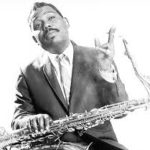 Willis Jackson was another one of those R&B/Blues/Jazz improvisors who borrowed a lot from Illinois Jacket. He definitely had his own style with a strong sound that could really wail and scream. As his nickname suggests he was originally from Florida. He had strong association with the famous organist Jack McDuff and also an 8 year association with famous R&B singer Ruth Brown, who he also married.
Willis Jackson was another one of those R&B/Blues/Jazz improvisors who borrowed a lot from Illinois Jacket. He definitely had his own style with a strong sound that could really wail and scream. As his nickname suggests he was originally from Florida. He had strong association with the famous organist Jack McDuff and also an 8 year association with famous R&B singer Ruth Brown, who he also married.
Louis Jordan
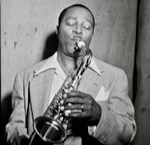 Louis Jordan was one of the most famous saxophonists and band leaders of the pre rock and roll era. He was playing a pre-curser to rock and roll which was called “Jump Blues”. He was an alto player and song writer. His hits included Choo Choo Cha Boogie, Ain’t Nobody Here But Us Chickens, and Caledonia to name a few. He was also a big influencer on other big names such as Ray Charles, B.B. King and Van Morrison, and even James Brown. Check out this clip…hard to believe this is what he was doing in the mid 1940’s! We can hear what’s coming right around the corner. This guy was a HUGE influencer.
Louis Jordan was one of the most famous saxophonists and band leaders of the pre rock and roll era. He was playing a pre-curser to rock and roll which was called “Jump Blues”. He was an alto player and song writer. His hits included Choo Choo Cha Boogie, Ain’t Nobody Here But Us Chickens, and Caledonia to name a few. He was also a big influencer on other big names such as Ray Charles, B.B. King and Van Morrison, and even James Brown. Check out this clip…hard to believe this is what he was doing in the mid 1940’s! We can hear what’s coming right around the corner. This guy was a HUGE influencer.
How Do Players Create that Blues Saxophone Sound?
When you listen to the examples here or elsewhere and try to figure out what specifically is responsible for creating that blues sound or feeling what stands out for you?
The sound of the sax is likely the first thing that grabs our attention. Any blues style player will have a distinct sound which usually differs from other players in other gentes of music.
The classic blues saxophone tone is more edgy, dirtier, and often with some elements of effects like growing and flutter tonguing. Other embellishments such as scoops or note bending are used a lot as well.
The other thing that can be identified as making a sound or style bluesy is the specific notes a player chooses, this is called a scale. The type or kind of scale used can greatly help us as musicians achieve the goal of creating a certain type of mood or sound. This can be as simple as a 5 note pentatonic scale to a more conventional 7 or 8 note scale to a more advanced scale with even more notes.
If you want to improvise in any blues-based type of music concentrate on these scales:
- basic blues scale
- pentatonic major scale
- pentatonic minor scale
- dominant 7 scale
Any, or each of these can be used on it’s own, or in conjunction with one of the others in any blues-based music such as rock, pop funk, jazz etc.
The exercises below are simple but once you learn them really well you can start changing rhem up a bit to suit your own style and once you do, the possibilities can be almost endless!
The Basic Blues Scale

C Major Pentatonic Scale

The C Minor Pentatonic Scale

Dominant 7 Scale

Two Examples of a Basic Blues Scale Exercise
Two Examples of a Major Pentatonic Scale Exercise
The above video examples are taken from my How To Play Killer Blues & Rockin’ Sax Solos With 7 Notes Or Less course.
Want to Create Your Own Blues Saxophone Solos?
Have you wanted to make up your own rock and blues saxophone solos but get stuck or just don’t know how?
- It can be a daunting thing until someone shows you the right steps to make it all come together.
- You must learn the right notes (scales) and apply them to the right music.
- It’s not complicated if you take the right steps!
Let me show you step-by-step in my “Beginners Improvisation Mini-Course”
Your “Beginning Improvisation Mini-Course”
AKA The Tequila Download Bundle
What is the “Beginning Improvisation Mini-Course”?
- a practical, hands-on series of lessons
- keeping it simple using only one scale
- play-along exercises starting with only one note
Based entirely on the Dominant 7 Scale, one of the most popular and useful of all scales used for improvisation.
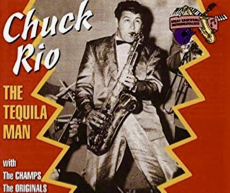 FREE Tequila Download Bundle
FREE Tequila Download Bundle
Register now and receive absolutely free:
- Tequila saxophone sheet music
- matching play-along mp3 backing track
- how to play the Tequila sax solo tutorial
- beginning improvisation mini-course
Already registered? Sign up for the Beginning Improv lessons on the form at the sidebar on the right >>>
Premium Members can access this mini-course from the “Improvisation” section of your Dashboard.
Similar topics which may be of interest to you:
Saxophone Solos – Saxophone solos from hit songs all using the 5 note pentatonic scale exclusively. You might be amazed to discover how some of the most famous pop rock sax solos were created using only 5 notes!


